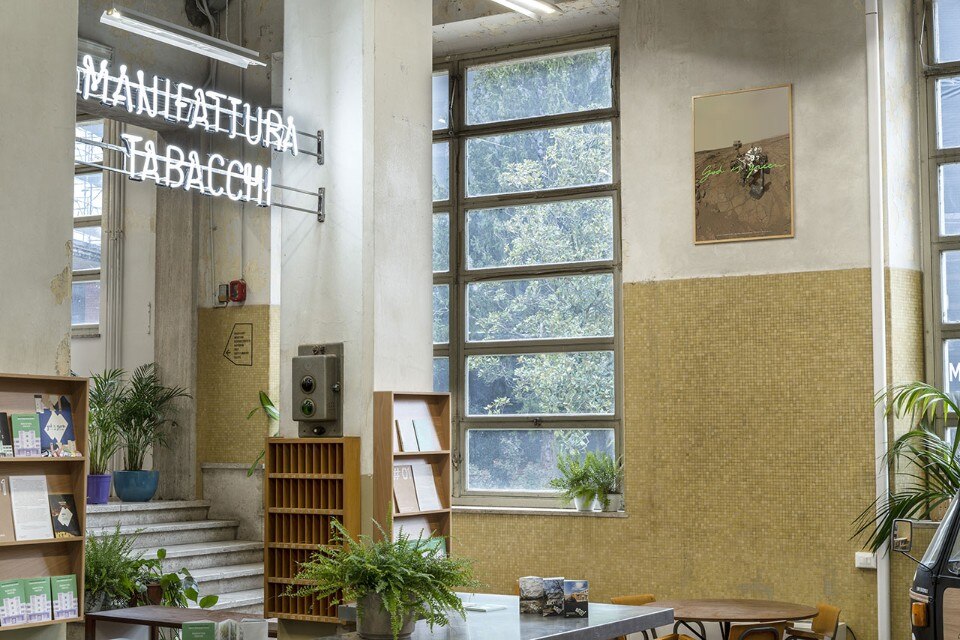“Florence is not just the Renaissance. We want to reassert the concept of the Renaissance workshop as a place of experimental and artistic growth. The goal is for Florence to be a laboratory of the modern world.” The words of Tommaso Sacchi, head of cultural policy in Florence, commenting on the opening of the exhibition “La Cura”. This is being held at Manifattura Tabacchi, a former industrial building converted into a creative workshop, and is part of the openness to the contemporary world being promoted by the city, following the reopening of Forte Belvedere, the relaunching of the Museo Novecento and the shows at the Palazzo Strozzi featuring the work of artists such as Ai Weiwei and Marina Abramovic.
The historic Manifattura Tabacchi is one of the few industrial archaeology sites in the city, the ideal place to represent the dialogue between history and modernity. Active between the 1930s and 2001, when it closed, the factory is a complex of 16 buildings. It has been bought by private enterprise, which has launched an ambitious urban regeneration programme: residential accommodation, fashion schools, theatres and conference rooms will fill the old warehouses, the workshops for processing the tobacco, the spaces for the cisterns, and the areas for tobacco storage areas and finishing.

The idea behind the first year of artist residencies at the Manifattura originates with Sergio Risaliti, head of the Museo Novecento since 2018, who is also curating the work. The six artists involved, Gioele Pomante, Matteo Coluccia and Stefano Giuri (all from Italy), Lori Lako (Albania), Mohsen Baghernejad Moghanjooghi (Iran) and Tatiana Stropkaiová (Slovakia), worked for five months in the industrial space, interpreting the varying meanings of the concept of “care” with different modes of artistic expression. Care is interpreted as dedication, concentration, love and precision; as care for the environment, the urban space and language; as care of the body and spirit; and as care for the heritage of the past and processes of innovation. There is care in the attention to detail in the creative process and in the development of the projects. The works on show are the product of the months of residency, supported by the tutors, Paolo Parisi and Robert Pettena, teachers at the city’s Accademia di Belle Arti. The six installations, which have been bought by the Manifattura, could one day form part of the Museo Novecento’s collection.
For the curator, the experience of the artist residencies is a form of professional training that gives the artists a sense of care for human beings and group relationships. Workshops organised by artists and art historians have led to the development of collective works closely tied to the industrial space, such as that curated by Marzia Migliore, Idrocarburi Policiclici Acromatici: an old canvas from the factory offices stained with dribbles of liquid tar, representing the lung diseases suffered by the women who processed the tobacco.

Art, once again, brings back to life the industrial archaeology of tobacco: the history of the Florentine factory is transformed into a laboratory of the modern world, just as a similar space in Milan was given over to the Museo Interattivo del Cinema. The painter and sculptor Alberto Burri understood the expressive potential of industrial spaces when, in the 1990s, he imagined showing his work in the tobacco drying rooms on the outskirts of Città di Castello.
- Exhibition Title:
- La cura. Residenze d'artista
- Opening dates:
- From march 20 to may 19, 2019
- Curated by:
- Sergio Risaliti
- Adress:
- Manifattura Tabacchi, via delle Cascine 35
- Location:
- Florence















